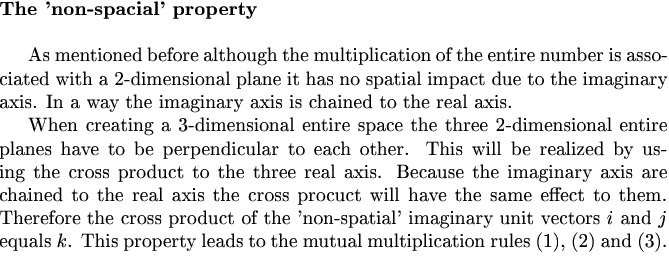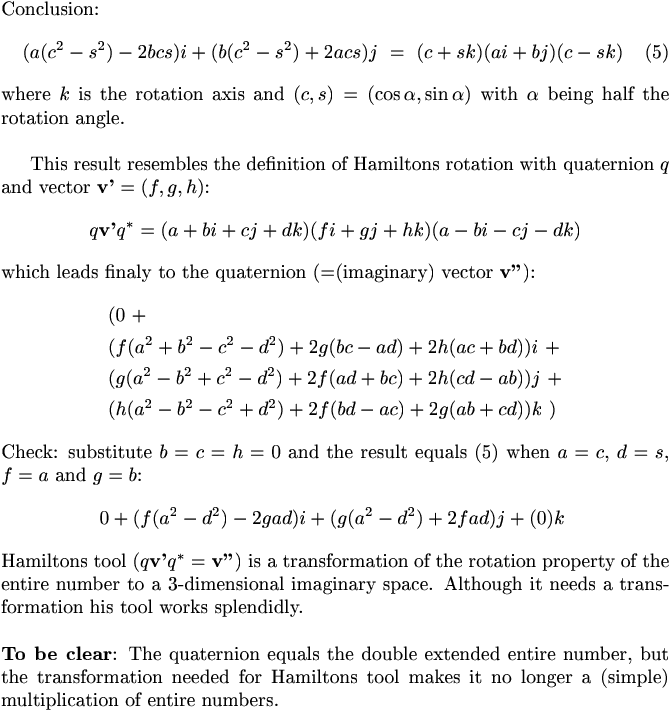The quaternions explained
Abstract
Although the multiplication of the entire number is associated with a 2-dimensional plane it has no spatial impact due to the imaginary axis. Therefore it’s not obvious to expand the entire number with a ‘third dimension’ to reach for a tool to calulate a rotation in a 3-dimensional environment.
Trying to find his rotation tool Hamilton extended the complex number, which he called ‘triplets’. Following his footsteps the entire number will be extended too. The cross product results in a new axis (c) that is also imaginary. In the imaginary plane (b,c) an imaginary ‘unit circle’ vector (u) can be defined. The multiplication of the extended entire number (w=<a,b,c>) will result in a rotation in the 2-dimensional plane with the real axis and the imaginary ‘unit circle’ vector u as the imaginary axis.
This way the extended entire number can be extended again (w=<a,b,c,d>) with a similar rotation as a result (only the vector u will be three dimensional). This double extended entire number equals the quaternion.
The non-spatial rotation of an entire number can be projected onto a 3-dimensional imaginary environment as a rotation in the ij-plane with the k-axis as the rotation axis. Hamilton’s 3-dimensional tool qv’q*=v” is based on the result of this transformation.
- 1 The entire number extended
- 2 The extended entire number extended
- 3 The quaternion
- 4 Hamilton's 3-dimensional tool






